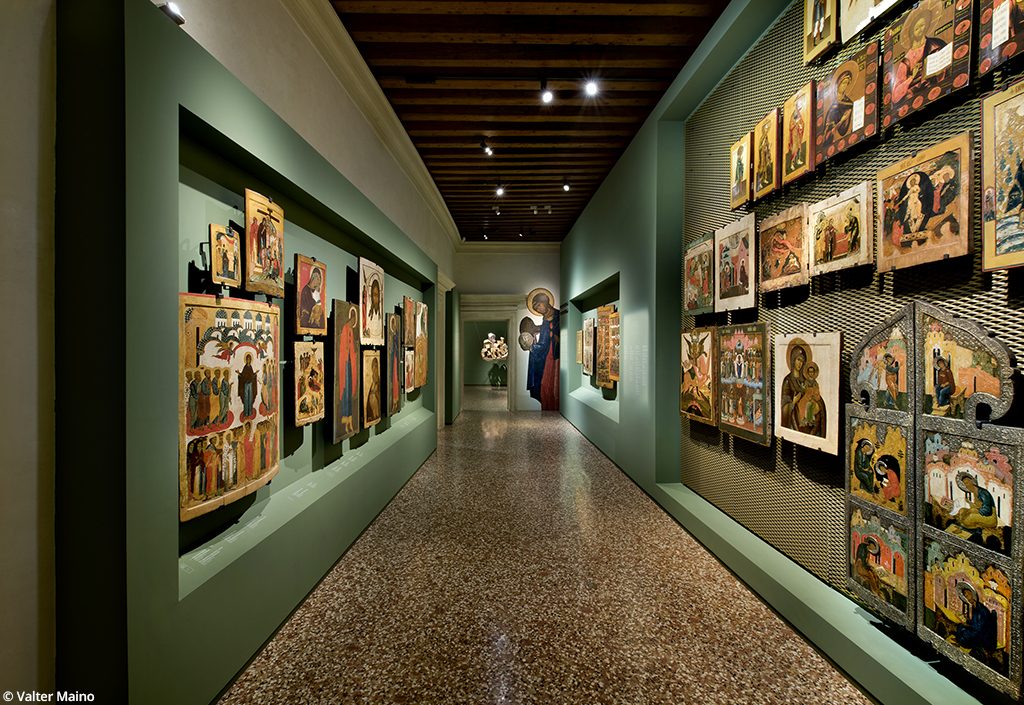The magic of the icons: where spirituality meets art
The Gallerie d'Italia museum in Vicenza is home to an extraordinary collection of Russian Icons owned by Intesa Sanpaolo, considered to be one of the most important in the West both in terms of the overall number of works and the presence of extremely rare, ancient times masterpieces. The first nucleus was acquired by Banco Ambrosiano Veneto during the 1990s and subsequently expanded with targeted purchases on the international market until it reached 462 plates. The icons in the collection form a precious artistic and spiritual heritage, composed of works covering a very broad chronological span. This collection documents the various phases of Russian icon painting, from the Middle Ages to the modern age, through its numerous artistic centres, including the illustrious schools of Moscow, Novgorod, Vladimir, Tver' and Pskov, as well as the provincial areas of central and northern Russia.


